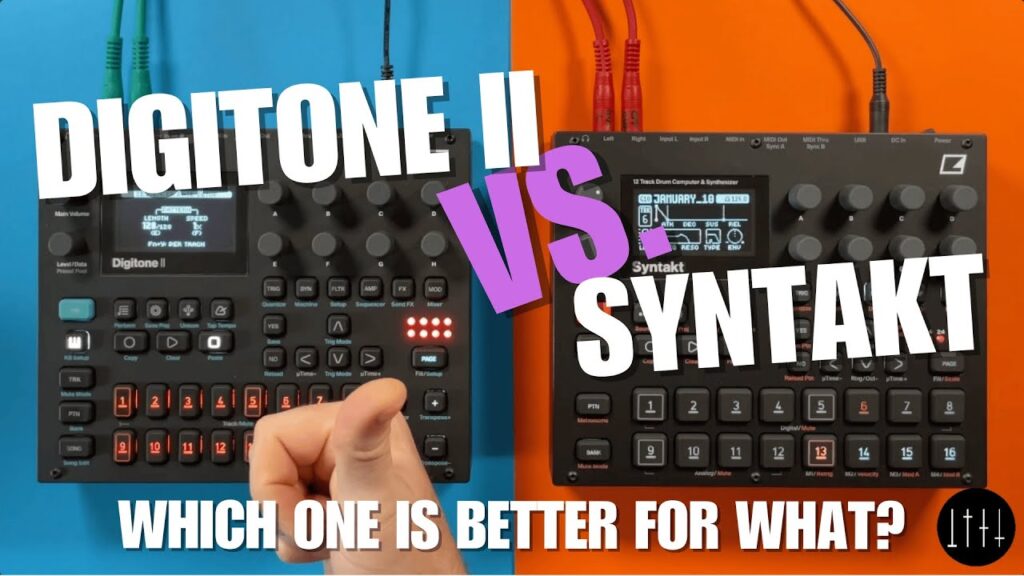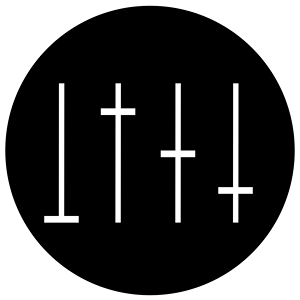
Digitone II vs. Syntakt Comparison – Which One Should You Choose?
Welcome back, lovely people!
If you’re anything like me, you know the very specific kind of joy that comes from diving into a new synth or drum machine, discovering weird sonic corners, and then questioning every life choice while building a beat at 3am. That’s the Elektron experience for you!
And today, we’re talking about two of the most exciting boxes in Elektron’s current lineup: Digitone II and Syntakt. I’ve spent the last few weeks in a rabbit hole with both, and while they’re very different creatures, the overlap is real—like sibling energy but one listens to IDM and the other throws warehouse raves.
So if you’re struggling to choose between them (or maybe wondering if you need both), here’s a detailed, honest comparison—pros, cons, quirks, and all.
Meet the Machines: Digitone II and Syntakt
Before the Digitone II came into the picture, Syntakt was Elektron’s darling for hybrid sound design—packing digital synthesis and analog drum machines into one squishy, sequencer-loving box. But with Digitone II now out in the wild, things are getting juicy. There’s serious overlap, and for some of us… serious decision paralysis.
Let’s break them down.
Digitone II – An FM Dream (That’s Way More Than FM)
Digitone II is built around FM synthesis—but wait! Don’t click away in fear just yet. This is not your dad’s confusing DX7. This thing is warm, lush, edgy, and, dare I say, fun.
Yes, FM can still be a bit mind-bendy, especially if you’re more used to subtractive synthesis. But with new synth machines like WaveTone, FM Drum, and the super inspiring Swarmer, Digitone II is way more approachable than its predecessor.
Why You’ll Love It:
- 16 tracks, 16 voices of polyphony. Enough to make full tracks in one box.
- Each track is flexible: percussion or melodic. Total freedom.
- New synth machines mean it’s not just metallic FM anymore—you can go warm, dark, lush, or chaotic.
- 128-step sequencer for long, evolving chord progressions. (8 bars baby!)
- Great for experimental sound design, ambient textures, IDM, cinematic scoring, and beyond.
And let’s not forget—the sequencer is the usual deep Elektron goodness. Conditional trigs, parameter locks, microtiming… chef’s kiss. 🎛️
The Flip Side:
- FM can still be a learning curve. It’s not instant gratification, but it is deeply rewarding.
- If you’re craving raw analog warmth, Digitone II is digital through and through.
- At the time of writing (January 2025), Overbridge isn’t available yet for DN2. That means transferring tracks to your DAW is… less than ideal. But it is coming. Promise.
Syntakt – Hybrid Heat with Grit and Groove
Now here’s where things get exciting. Syntakt is your go-to groovebox if you like punchy drums, gritty textures, and real-time performance tweaking. It’s a hybrid synth with 4 analog tracks and 8 digital ones, all designed to bring serious punch to your rhythm section.
Where Digitone II leans toward harmonic richness and polyphonic soundscapes, Syntakt is a groove-focused beast that thrives on distortion, character, and crunchy vibes.
What Makes It Stand Out:
- Hybrid engine: mix analog drum machines with digital synths for endless layering.
- Analog FX block with its own sequencer track. Yes, you can sequence your delay, reverb, and drive—independently.
- The Analog Drive is pure dirt in the best way possible.
- Excellent for live performance: hands-on, reactive, and punchy.
- Monophonic but incredibly capable—especially with creative sequencing.
If you’re making techno, electro, breaks, industrial, or anything drum-forward, the Syntakt is just so much fun.
The Caveats:
- Track 12 is always an analog cymbal… and you can’t change it. Yep. It’s fixed. And if you don’t like it (I don’t), you basically lose one of your four precious analog tracks.
- No polyphony. Sure, there’s a „Chord Machine,“ but it’s not a substitute for real poly tracks like on DN2.
- Some synth machines feel slightly limited in tweakability compared to Digitone II.
- Firmware 1.30 still feels incomplete—blank spots and all. Elektron, we see the gaps. 👀
Use Case Breakdown – Which One Is For You?
Let’s be real—both are amazing. But depending on what you’re making, one might be better suited for your setup.
Choose Digitone II if:
- You want to build complete tracks in one box.
- You’re into complex chords, evolving textures, and melodic work.
- You love to explore synthesis and sound design deeply.
- Polyphony matters to you.
- You enjoy ambient, IDM, cinematic, or experimental music.
Choose Syntakt if:
- You want grimy analog drums and hands-on FX control.
- You’re primarily focused on beats and percussion.
- You perform live and want that reactive, tactile experience.
- You love layering analog with digital in unique, dirty ways.
- You produce techno, electro, industrial, or anything rhythm-heavy.
My Final Thoughts – Do You Need Both?
Honestly? If budget and space allow, they complement each other beautifully. Digitone II brings harmonic depth, while Syntakt gives you that crunchy, raw, rhythmic energy. But if you’re choosing just one, think about how you like to build music—melody first or rhythm first?
For me, the Digitone II won this round—simply because of its expanded synth engines, polyphony, and how versatile it’s become. But that fixed cymbal on the Syntakt still haunts me. (Elektron, please… let us change that machine.)
Your Turn!
Which one do you prefer? Are you Team Digitone II or Team Syntakt? Or are you like me, already imagining a setup that has both, synced with some cheeky conditional trigs?
Let me know in the comments. Let’s geek out together.
And if you found this helpful, hit that like button and subscribe for more synth nerdery, workflow tips, and general musical chaos.
See you in the next one, lovely people! ✨
Stay noisy,
Heiko 🎛️
